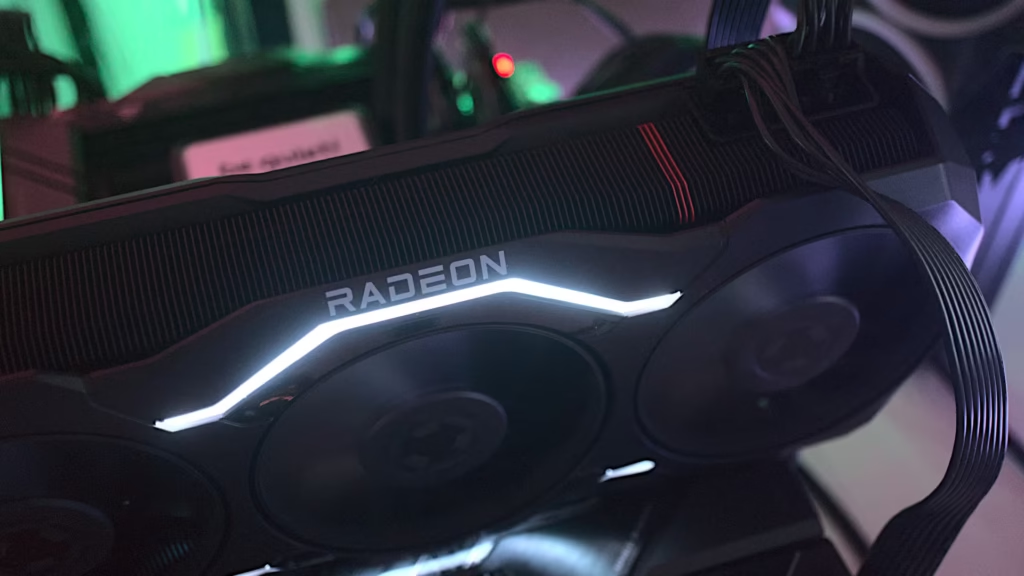Hardy tin tức công nghệ lớn
Cập nhật thông tin với HardyNews! Đi sâu vào những tin tức, xu hướng và phân tích mới nhất về những gã khổng lồ công nghệ lớn cũng như những đổi mới của họ đang định hình thế giới kỹ thuật số.

Our Top Picks
Bản cập nhật thư rác tháng 12 năm 2024 của Google: Deindexing và Deranking tấn công mạnh vào các trang web
admin 4 months ago
Google has rolled out its December 2024 Spam Update, and its effects are already being felt across the web. The...
Điện toán lượng tử để củng cố chữ ký Bitcoin: Thông tin chi tiết từ Adam Back
admin 4 months ago
Đây là GPU mà tôi hào hứng nhất vào năm 2025 – Và nó không phải của Nvidia
admin 4 months ago
Latest Guide
Từ phòng thí nghiệm đến cuộc sống: Memristor quy mô nguyên tử mở đường cho AI giống não bộ và sức mạnh tính toán thế hệ tiếp theo
In a groundbreaking development, atomic-scale memristors are emerging as the key to unlocking the future of artificial intelligence (AI) and next-generation computing. These incredibly small devices, capable of mimicking the way the human brain works, are paving the way for highly efficient, brain-like AI systems and more powerful computers. Here’s a look at how these tiny components are transforming technology, from the lab to life, and what this means for the future of computing. What Are Memristors? A memristor—a term derived from a combination of “memory” and “resistor”—is a type of electronic component that regulates the flow of electrical current based on its previous history. Unlike traditional resistors, which simply oppose electrical flow, memristors have the unique ability to remember past electrical states, which allows them to store data without needing power. Memristors were theorized in the 1970s by Leon Chua, but it wasn’t until 2008 that researchers at HP Labs successfully created the first practical memristor. Since then, research in this field has exploded, and scientists are exploring the potential of these devices in a wide array of applications, particularly in AI, memory storage, and computing. Atomic-Scale Memristors: Revolutionizing Computing at the Smallest Level While traditional memristors are already considered groundbreaking, the development of atomic-scale memristors takes this technology to a whole new level. These minuscule devices—made from just a few atoms—are not only more energy-efficient but also significantly faster than their larger counterparts. Atomic-scale memristors are capable of storing and processing data with much lower power consumption, making them a perfect candidate for the next generation of computers, especially in AI and machine learning systems. The ability to manipulate data at the atomic level is a huge leap forward, enabling faster and more efficient memory storage and processing. These devices could eventually replace traditional transistors, revolutionizing everything from consumer electronics to supercomputers. The Brain-Like AI Connection What sets memristors apart from traditional components is their ability to simulate the functionality of the synapses in the human brain. In the brain, synapses are responsible for transmitting signals between neurons, and their efficiency in processing and storing information is one of the reasons the brain is so powerful. Memristors, by mimicking this function, allow machines to perform tasks in a way that is similar to how the human brain operates, with the ability to learn, adapt, and improve over time. This brain-like functionality in AI opens up new possibilities for creating systems that can learn and think more like humans. Traditional computers rely on binary systems to process information, using 0s and 1s to represent data. However, memristors allow for a much more analog-like process, where the data is processed and stored in a continuous manner, similar to the way the brain handles information. Key Benefits of Atomic-Scale Memristors for AI and Computing From Research to Real-World Applications While atomic-scale memristors have shown tremendous promise in the lab, their real-world applications are already starting to take shape. Researchers and tech companies are working on integrating these components into various types of systems, including: Challenges and the Road Ahead Despite the incredible potential of atomic-scale memristors, there are still several challenges to overcome. Manufacturing these tiny devices at scale, ensuring long-term reliability, and integrating them into existing systems are just a few of the hurdles that need to be addressed before memristors can be fully realized in the consumer market. However, with the ongoing advancements in material science, fabrication techniques, and AI research, the future looks bright for memristors. As these devices continue to mature, we may see them revolutionizing not just AI and computing, but the entire tech industry. Conclusion: A Leap Toward Brain-Like AI and Smarter Computing Atomic-scale memristors represent a monumental step in the evolution of computing. By mimicking the functionality of synapses in the human brain, these tiny devices are opening up new possibilities for AI systems that can think, learn, and adapt like humans. Their power efficiency, speed, and potential for scalable solutions make them an essential building block for the next generation of computing technologies. As researchers continue to push the boundaries of what’s possible with memristors, we are on the cusp of a new era in computing—one that promises to bring us closer to brain-like AI, smarter devices, and more powerful systems capable of tackling the world’s most complex challenges.
Latest Posts
Tin tức công nghệ
Khám phá công nghệ mới nhất với Tin tức công nghệ của chúng tôi. Chúng tôi loại bỏ tiếng ồn để có những cập nhật ngắn gọn, phù hợp, giúp bạn luôn cập nhật về bối cảnh công nghệ đang phát triển nhanh chóng với nội dung được tuyển chọn giúp tách tín hiệu khỏi tiếng ồn.
Câu chuyện công nghệ chuyên sâu
Khám phá tác động của công nghệ trong Câu chuyện chuyên sâu. Báo chí dữ liệu tường thuật đưa ra những phân tích toàn diện, tiết lộ những câu chuyện đằng sau dữ liệu. Hiểu các xu hướng của ngành để có cái nhìn sâu sắc hơn về mối quan hệ phức tạp của công nghệ với xã hội.
Nhận xét của chuyên gia
Trao quyền cho các quyết định nhờ Đánh giá của chuyên gia, kết hợp kiến thức chuyên môn trong ngành và phân tích sâu sắc. Đi sâu vào những vấn đề phức tạp về công nghệ, nhận được những ưu đãi tốt nhất và luôn dẫn đầu với hướng dẫn đáng tin cậy của chúng tôi để điều hướng thị trường công nghệ luôn thay đổi.

Khám phá HardyNews.com/vn, nguồn thông tin cập nhật mới nhất của bạn tại Việt Nam, thông tin chuyên sâu và phân tích chi tiết về các công nghệ mới nổi, tiện ích tiên tiến, tiến bộ AI và đổi mới toàn cầu.
Quick Links
- Trang chủ
- Về chúng tôi
- Điều khoản & Điều kiện
- Quyền riêng tư và chính sách
- Liên hệ với chúng tôi
















